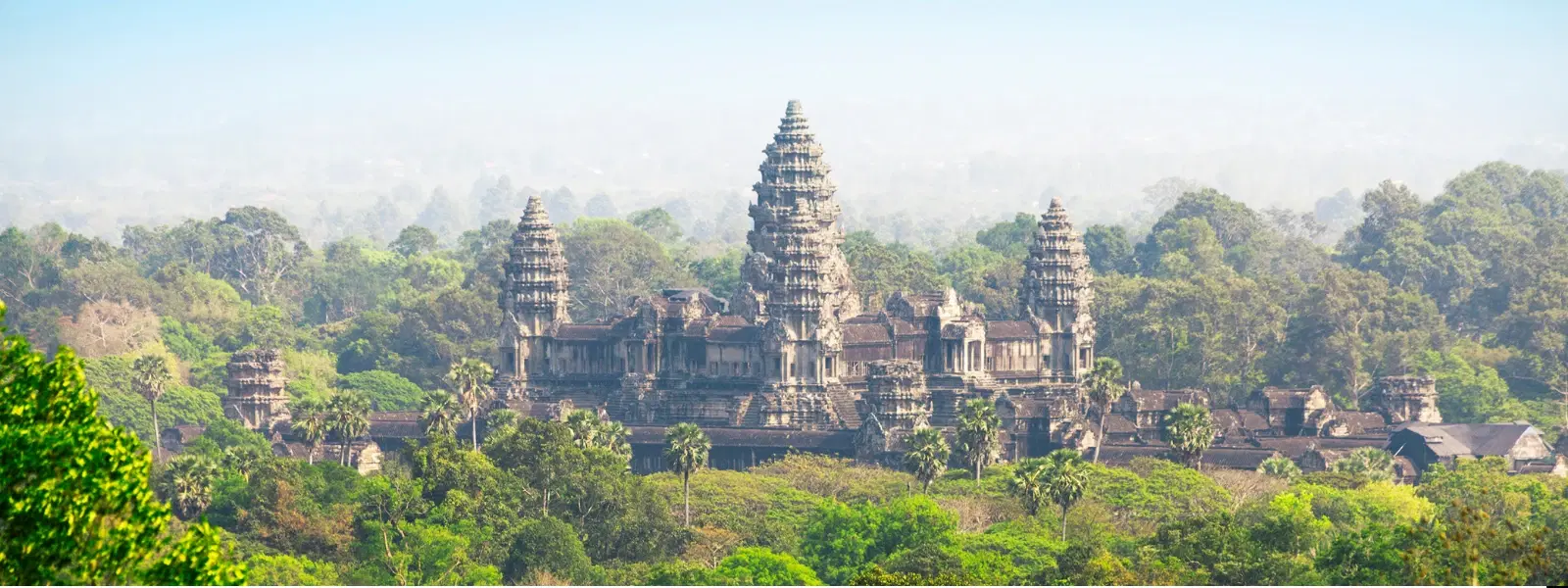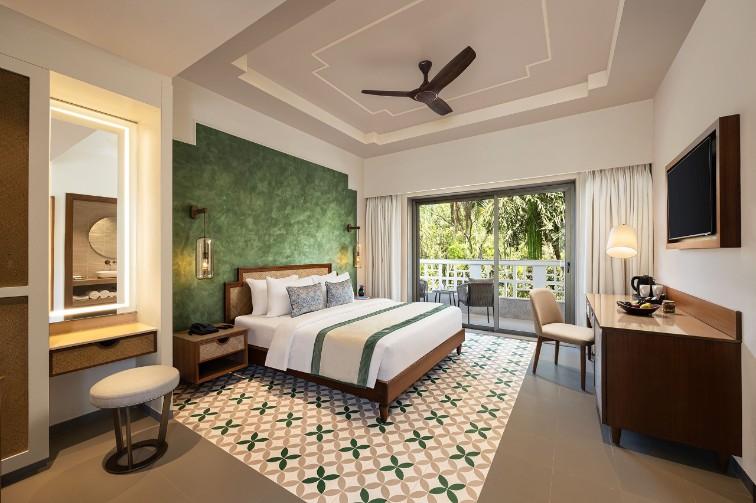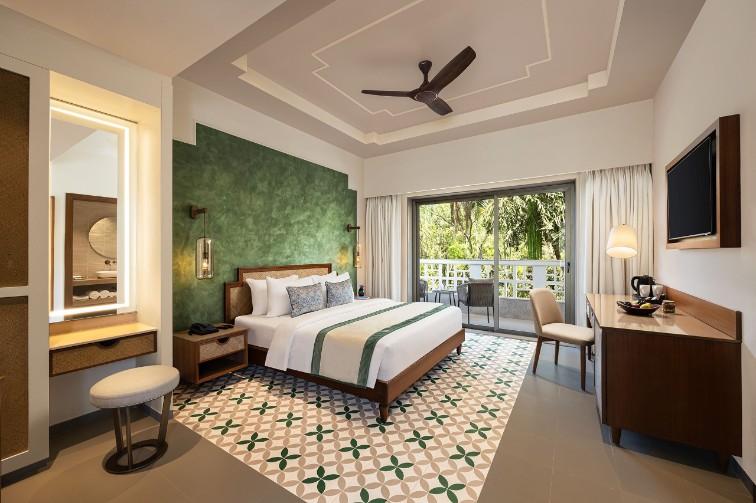
Hotels
•05 min read

Angkor Wat Temple stands as a breathtaking symbol of history and spirituality, drawing travelers and photographers alike with its mesmerizing beauty. For those seeking to capture its grandeur and experience its peaceful aura, knowing the best time to visit Angkor Wat is essential. This post will guide you through the seven ideal times to journey to this ancient masterpiece, ensuring you enjoy the optimal weather, minimal crowds, and unforgettable landscapes.
The weather at Angkor Wat plays a crucial role in shaping your visit. Whether it is the crisp air of the dry season or the vibrant atmosphere of the monsoon period, every season offers distinctive advantages for photography and comfort. For example, a clear sky enhances the ancient stone carvings and intricate architecture, making it easier to appreciate the depth and detail of the temple’s design. To help plan your trip better, consult an Angkor Wat weather guide to learn how seasonal variations might affect your adventure.
Timeliness not only influences the weather but also the number of people visiting the temple. Visiting during off-peak periods can provide a tranquil, almost meditative environment, where you can truly soak in the magnificence of Angkor Wat without feeling rushed. For those who prefer a serene experience, the Angkor Wat tourist information centers offer updates on visitor numbers and helpful tips on avoiding the busiest times. Strategically planning your visit according to these factors will elevate your experience and ensure a more relaxed exploration.
The early hours of the day unlock a magical view of Angkor Wat. As the first rays of the sun break through the horizon, the temple is bathed in a warm, golden light that accentuates its majestic contours. This time frame is celebrated by photographers as it provides a soft and enchanting backdrop for capturing stunning images. Refer to an Angkor Wat sunrise guide for tips on composition and the best vantage points.
Just as the day is cooling down, the late afternoon offers an equally captivating scene. During this golden hour, the gentle light and elongated shadows create dramatic effects, adding depth to your photographs. This period is ideal for those who wish to capture the temple in a softer and more reflective mode.
This period is widely recognized as the best season to visit Angkor Wat due to its pleasant weather and clear skies. With minimal rainfall and cooler temperatures, these months provide excellent conditions for sightseeing and long hours of temple exploration without the discomfort of high humidity.
December not only offers comfortable weather but also an array of cultural festivals that add a vibrant backdrop to the visit. The combination of ideal weather conditions and the celebration of local traditions makes December uniquely appealing. It’s a time when the temple and its surroundings come alive with cultural expressions and community celebrations.
For a quieter excursion, aim to visit on weekdays. Major tourist attractions, including Angkor Wat, tend to be less crowded from Monday to Friday, allowing for a more intimate experience. If you’re in search of the quietest time to visit Angkor Wat, weekdays offer a perfect setting to explore at your own pace and enjoy unobstructed views of every stone and ripple of history.

While the monsoon season might seem less attractive at first glance, it brings its own set of benefits. The refreshing rains transform the landscape, rendering the surrounding greenery more lush and vibrant, and the sparse crowds ensure that you have ample space to marvel at this ancient wonder. Although some might consider this period the worst time to visit Angkor Wat due to the rain, if you are prepared with the right gear, you will witness a side of the temple that is intimate and raw in its beauty.
Visiting Angkor Wat during major cultural events can be an enriching experience. Festivities often include traditional music, dance, and rituals that reveal the profound cultural heritage behind the temple. If you wish to understand the historical context and the living traditions of Cambodia, attend one of these events and allow yourself to be carried away by the celebratory spirit.
Deciding how many days to devote to exploring Angkor Wat is influenced by your interests. For most travelers, 1-2 days may suffice to cover the temple complex and nearby attractions. However, if you are a photography enthusiast or a history buff, spending an extra day might allow for a deeper exploration without feeling rushed. Effective Angkor Wat trip planning includes scheduling time for breaks, meals, and a leisurely stroll through the temple grounds to truly absorb its magnificence.
Comfort and practicality should be your priorities when packing. Lightweight, breathable clothing is advisable, especially during the warm hours. It's also essential to carry comfortable walking shoes, sun protection, and a raincoat if you’re traveling during the monsoon season. Practical tips like these ensure that your visit remains comfortable and enjoyable, regardless of the season.
To make the most of your exploration, use insider tips available at the local tourist centers. Arriving early or during the late afternoon will help you skip the busiest periods, allowing you to fully appreciate the temple’s tranquil ambiance. Planning your itinerary around the crowd flow will lend you more time to capture perfect photographs and reflect on the historical significance of each structure.
Siem Reap offers a range of accommodation options to suit every budget. From luxury five-star hotels near Angkor Wat to more economical guesthouses, every traveler can find a comfortable place to relax after a day of exploration. Selecting hotels near Angkor Wat not only provides you with convenience but also offers the additional charm of experiencing the local hospitality first-hand. Check out recommendations under where to stay near Angkor Wat and accommodation near Angkor Wat to learn more about the benefits of staying close by.
Choosing an accommodation with easy access to Angkor Wat can significantly enhance your travel experience. Many top-rated hotels provide amenities such as guided tours, cultural shows, and even transportation services, assisting you in understanding Siem Reap travel tips effectively. It is always worthwhile to select a spot that minimizes your daily commute, offering more time to enjoy the majesty of the temple.

Angkor Wat's weather varies throughout the year. In summary, November to March promise mild temperatures and low rainfall, while April can be warmer but still pleasant. May to October typically bring rain showers that refresh the landscape and reduce the number of tourists. This concise weather overview can serve as a quick reference guide while planning your visit.
When asked, 'What is the best month to visit Angkor?' the answer often points toward the dry season, particularly November to March. Conversely, occasional heavy rains during the early monsoon period, especially September and October, may create challenges when exploring. Weighing these factors will help you make a well-informed decision on the best time to visit Angkor Wat Temple.
Pro Tip from Tata Neu: Did you know? The best time of day to visit Angkor Wat is during sunrise. Not only will you capture stunning photos, but you'll also beat the crowds and enjoy a serene start to your day.
The best months to visit Angkor Wat are November to March, when the weather is cool and the skies are clear.
Most travelers plan to spend 1-2 days at Angkor Wat, though extra time may be needed for in-depth exploration.
Avoid the peak monsoon months when heavy rains can hinder full exploration.
November to March is ideal for visiting Cambodia, thanks to the comfortable temperatures and minimal rainfall.
Timing your visit to Angkor Wat is key to experiencing its breathtaking beauty and rich cultural heritage. Whether you are drawn to the iconic sunrise, the charming golden hour, or the vibrant cultural festivals, the insights shared here offer you a roadmap to plan an unforgettable visit. Make use of the practical travel tips, consider ideal accommodation options, and align your schedule with the seasonal weather to truly appreciate this ancient marvel.